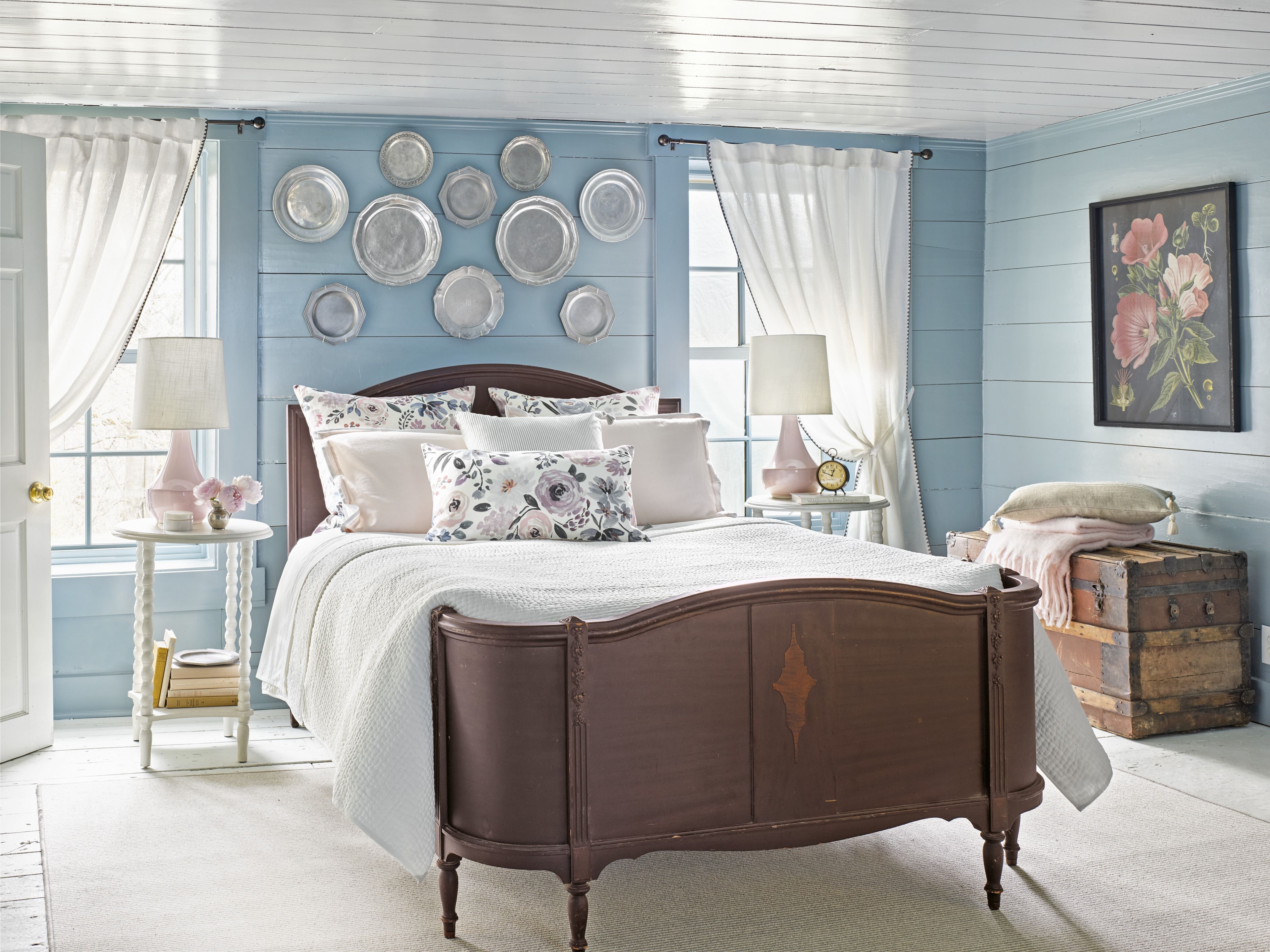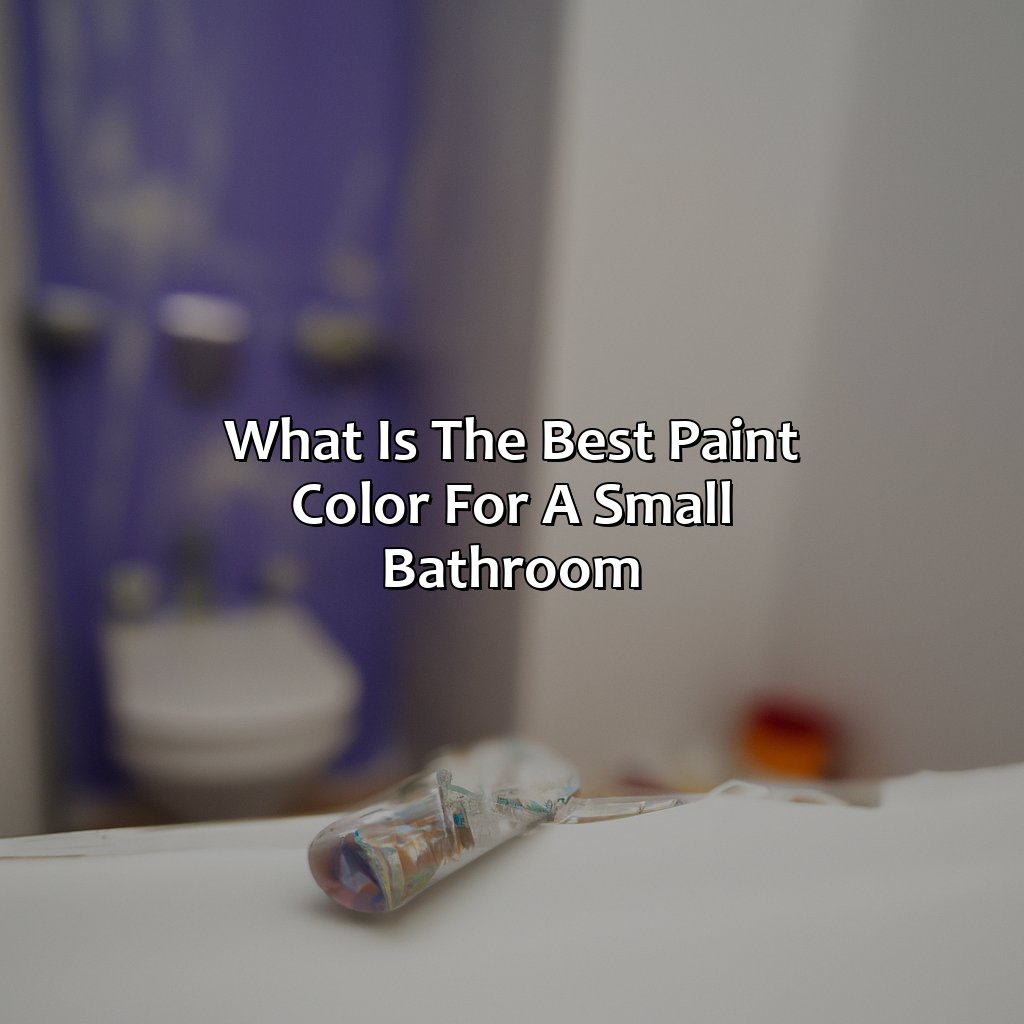Understanding the Psychology of Color

The color of your bedroom walls can have a significant impact on your mood, sleep quality, and overall well-being. Understanding the psychology of color can help you choose the perfect hue to create a calming and inviting space that promotes relaxation and restful sleep.
The Impact of Color on Mood and Atmosphere
The colors we surround ourselves with can evoke specific emotions and create different atmospheres. For example, calming colors like blue and green are often associated with peace and tranquility, while vibrant colors like red and yellow can stimulate energy and excitement.
The Influence of Warm and Cool Colors on Perceived Room Size
Warm colors, such as red, orange, and yellow, tend to advance, making a room feel smaller and cozier. Conversely, cool colors, such as blue, green, and purple, recede, creating an illusion of more space. This principle can be used to advantage in a small bedroom, where lighter, cooler colors can help create a sense of spaciousness.
Specific Colors and Their Effects
- Blue: Often associated with calmness, tranquility, and serenity. It can help promote relaxation and sleep, making it an excellent choice for a bedroom. It is also known to lower blood pressure and heart rate, contributing to a sense of peace.
- Green: A calming and refreshing color that is often associated with nature. It can help reduce stress and promote a sense of well-being. It can also be helpful in improving focus and concentration.
- Purple: Often associated with royalty and luxury, purple can create a sense of sophistication and calm. It can also promote creativity and intuition.
- Yellow: A cheerful and uplifting color that can boost energy and creativity. However, too much yellow can be stimulating and may interfere with sleep. Consider using it in small doses, such as accent walls or furniture.
- Red: A stimulating color that can increase energy and passion. However, it can also be associated with aggression and anxiety. It is not recommended for a bedroom as it may disrupt sleep.
Popular Color Choices for Small Bedrooms: Best Paint Color For Small Bedroom
/GettyImages-513043721-5accc488c67335003747aeed.jpg)
Choosing the right paint color for a small bedroom can significantly impact its overall feel and functionality. The color you select can influence the perception of space, create a calming atmosphere, or even boost your mood. This section explores some popular paint color choices for small bedrooms, categorized by color family, to help you find the perfect hue for your space.
Popular Color Choices for Small Bedrooms, Best paint color for small bedroom
The choice of paint color for a small bedroom can have a significant impact on the overall ambiance and perception of space. Light, airy colors tend to make a room feel larger and more inviting, while darker colors can create a cozy and intimate atmosphere. Here’s a breakdown of popular color choices, categorized by color family, along with their mood and best use cases:
| Color | Description | Mood | Best Use Case |
|---|---|---|---|
| White | A classic and versatile choice that reflects light and creates a sense of spaciousness. | Clean, crisp, and airy | Modern, minimalist, or Scandinavian style bedrooms. |
| Cream | A warm and inviting neutral that adds a touch of sophistication. | Warm, cozy, and elegant | Traditional, farmhouse, or cottage style bedrooms. |
| Gray | A sophisticated and calming neutral that can be paired with a variety of accents. | Modern, serene, and tranquil | Contemporary, industrial, or minimalist style bedrooms. |
| Beige | A warm and earthy neutral that provides a sense of comfort and grounding. | Warm, inviting, and comforting | Traditional, rustic, or bohemian style bedrooms. |
| Pale Blue | A calming and serene color that evokes a sense of peace and tranquility. | Relaxing, soothing, and calming | Coastal, nautical, or minimalist style bedrooms. |
| Lavender | A soft and romantic color that adds a touch of elegance and femininity. | Romantic, calming, and relaxing | Shabby chic, vintage, or feminine style bedrooms. |
| Pale Green | A refreshing and invigorating color that brings a touch of nature indoors. | Calming, refreshing, and energizing | Farmhouse, cottage, or bohemian style bedrooms. |
| Pale Yellow | A cheerful and optimistic color that adds warmth and brightness to a room. | Happy, cheerful, and welcoming | Traditional, cottage, or eclectic style bedrooms. |
| Coral | A vibrant and energetic color that adds a touch of warmth and personality. | Energetic, cheerful, and inviting | Modern, eclectic, or bohemian style bedrooms. |
| Teal | A sophisticated and calming color that adds a touch of depth and interest. | Serene, sophisticated, and calming | Modern, coastal, or eclectic style bedrooms. |
Tips for Choosing the Right Color

Choosing the right paint color for your small bedroom is crucial to creating a space that feels both inviting and visually appealing. It’s a balancing act between personal preference, practicality, and the impact of color on mood and perception. This section will guide you through a step-by-step process to help you make the best decision.
Assess Natural Light
The amount of natural light your bedroom receives plays a significant role in how colors appear.
- Bedrooms with ample natural light: You have more flexibility with color choices. You can experiment with deeper hues, bolder accents, and even dark colors, as the natural light will prevent the room from feeling gloomy. For instance, a deep navy blue might create a sophisticated and calming atmosphere in a well-lit bedroom.
- Bedrooms with limited natural light: Opt for lighter, brighter colors to create a sense of spaciousness and airiness. Warm neutrals like creams, soft yellows, and pale pinks can make a small bedroom feel more inviting and spacious. Consider using light-reflecting finishes like satin or semi-gloss to further enhance the effect.
Consider Furniture and Decor
The existing furniture and decor in your bedroom will also influence your color choices.
- Matching or contrasting: You can either choose paint colors that complement the existing furniture or create a bold contrast. If your furniture is mostly neutral, you have more freedom to introduce a pop of color on the walls. Conversely, if your furniture has strong colors or patterns, you might want to choose a more neutral wall color to avoid overwhelming the space.
- Highlighting features: Use color to draw attention to specific features. For example, painting a small alcove in a contrasting color can make it feel more defined and create a sense of depth.
Think About Personal Style
Ultimately, the most important factor is your personal style and preferences.
- Explore color palettes: Create a mood board or browse design magazines to gather inspiration. Consider colors that evoke feelings of relaxation, tranquility, or energy, depending on your desired atmosphere.
- Test paint samples: Before committing to a full paint job, always test paint samples on your walls. This allows you to see how the color looks in different lighting conditions and how it interacts with your furniture and decor.
Create a Balanced Design Scheme
The overall design scheme of your bedroom should be cohesive and well-balanced.
- Color harmony: Consider using a color scheme that incorporates complementary, analogous, or triadic colors. This creates a visually appealing and harmonious effect.
- Visual interest: Add visual interest to a small bedroom by incorporating different textures and patterns. For example, a patterned rug, textured throw pillows, or a patterned headboard can break up the monotony of a solid wall color.
Understand the Impact of Color on Ambiance
Different colors evoke different emotions and can significantly impact the overall ambiance of your bedroom.
- Calming colors: Blues, greens, and purples are known for their calming and relaxing effects. They are ideal for creating a serene and restful atmosphere in the bedroom.
- Energizing colors: Reds, oranges, and yellows are stimulating and energizing colors. While they can be great for creating a vibrant and cheerful mood, they might not be the best choice for a bedroom where you want to relax and unwind.
Best paint color for small bedroom – Yo, if you’re trying to make your tiny bedroom feel less cramped, a light neutral color is the way to go. It’ll make the space feel bigger, but don’t be afraid to add some pops of color. Check out this neutral bedroom with blue accents guide for inspo.
Blue is a chill color that can make your room feel like a relaxing oasis. If you’re going for a neutral vibe, a light gray or beige is always a safe bet.
Okay, so you’re trying to figure out the best paint color for your small bedroom, right? Like, you want it to feel spacious and chill, but also kinda glam? Well, you should totally check out this pink blue gold bedroom idea.
It’s like, totally luxe and makes a small space feel bigger because of the light colors. But if you’re going for something more low-key, maybe stick with a light blue or a pale green. Those colors are always good for a small room.
